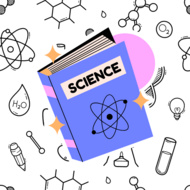Animal Survival: Physical Characteristics of Environments
(View Complete Item Description)Learn about the physical characteristics of environments and act out the animals that live there! You are the next contestant on the Take the Stage game show ANIMAL SURVIVAL where you will travel in a hot air balloon to the forest of North America, the savanna of Africa, and then take a submarine ride underwater in the ocean. To play the game, you will act out an animal that would live in each environment, and then write how the physical characteristics of each environment helps your animal survive. Learning Objective: observe and describe the physical characteristics of environments and how they support populations and communities of plants and animals within an ecosystem.
Material Type: Activity/Lab, Lesson












